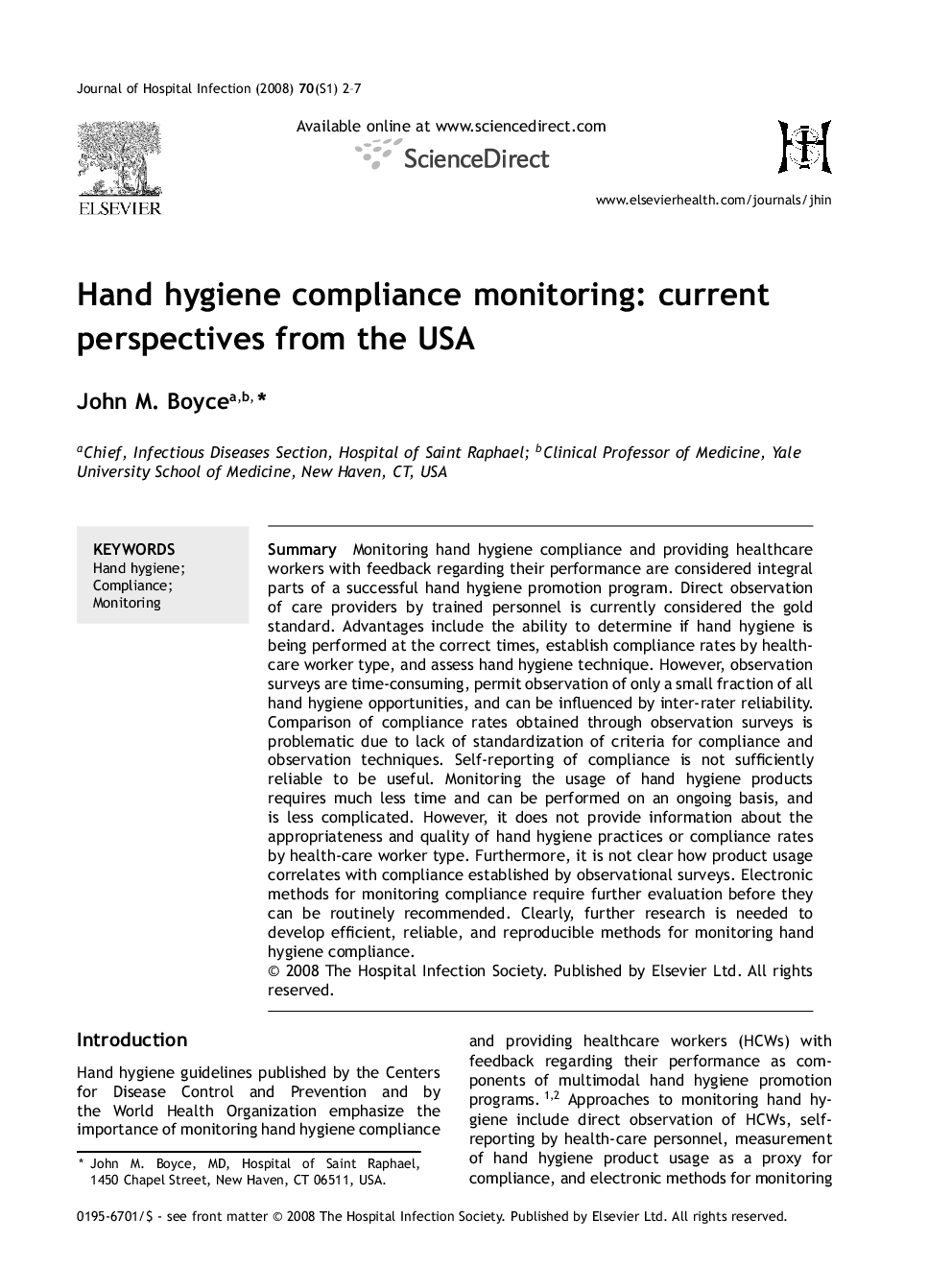| کد مقاله | کد نشریه | سال انتشار | مقاله انگلیسی | نسخه تمام متن |
|---|---|---|---|---|
| 3373190 | 1219285 | 2008 | 6 صفحه PDF | دانلود رایگان |

SummaryMonitoring hand hygiene compliance and providing healthcare workers with feedback regarding their performance are considered integral parts of a successful hand hygiene promotion program. Direct observation of care providers by trained personnel is currently considered the gold standard. Advantages include the ability to determine if hand hygiene is being performed at the correct times, establish compliance rates by healthcare worker type, and assess hand hygiene technique. However, observation surveys are time-consuming, permit observation of only a small fraction of all hand hygiene opportunities, and can be influenced by inter-rater reliability. Comparison of compliance rates obtained through observation surveys is problematic due to lack of standardization of criteria for compliance and observation techniques. Self-reporting of compliance is not sufficiently reliable to be useful. Monitoring the usage of hand hygiene products requires much less time and can be performed on an ongoing basis, and is less complicated. However, it does not provide information about the appropriateness and quality of hand hygiene practices or compliance rates by health-care worker type. Furthermore, it is not clear how product usage correlates with compliance established by observational surveys. Electronic methods for monitoring compliance require further evaluation before they can be routinely recommended. Clearly, further research is needed to develop efficient, reliable, and reproducible methods for monitoring hand hygiene compliance.
Journal: Journal of Hospital Infection - Volume 70, Supplement 1, October 2008, Pages 2-7